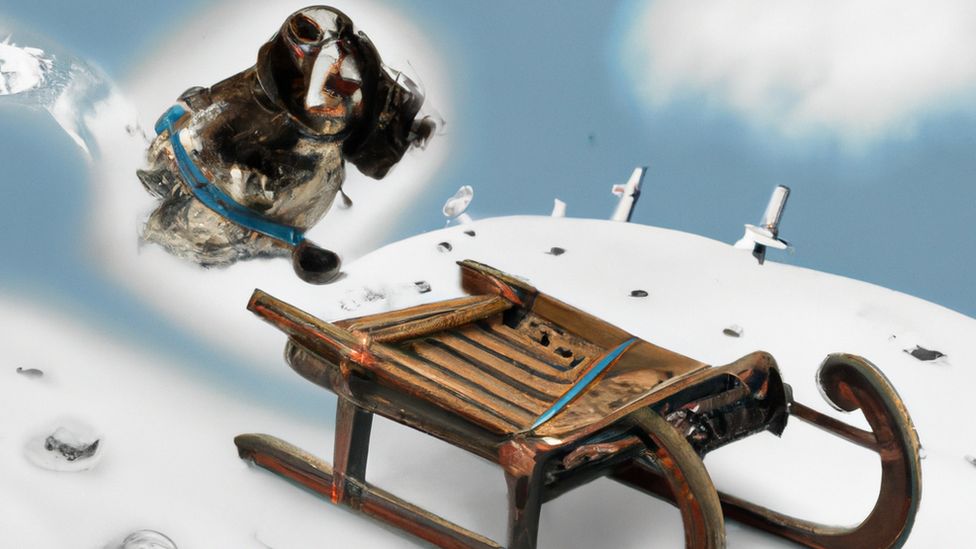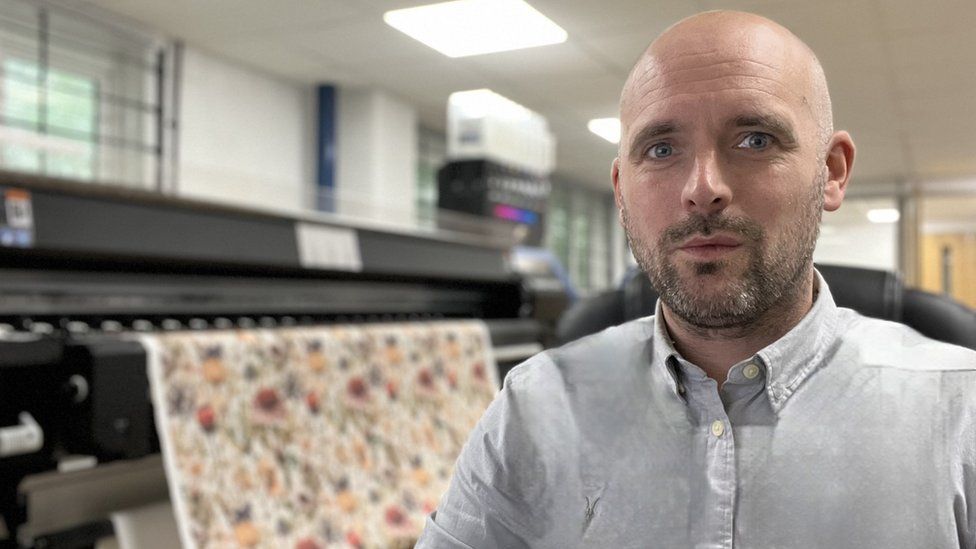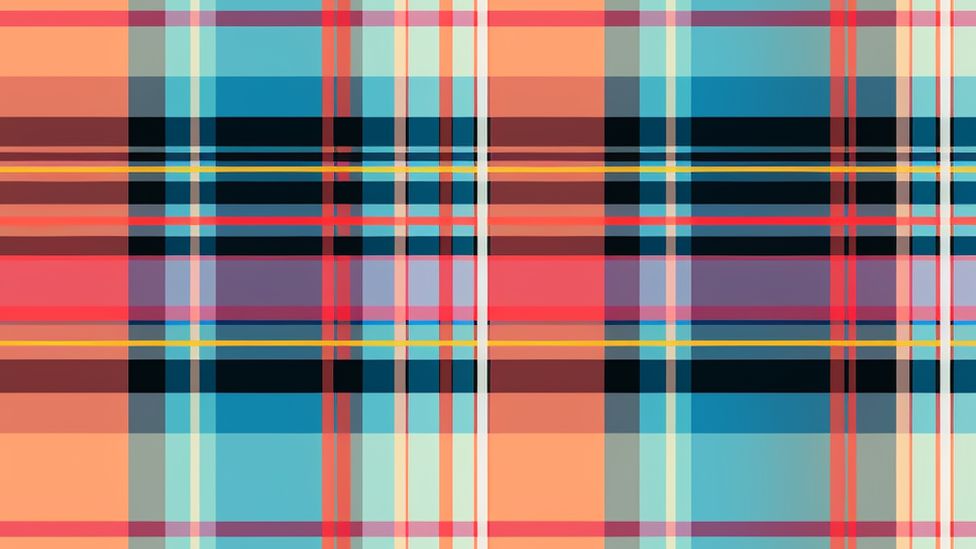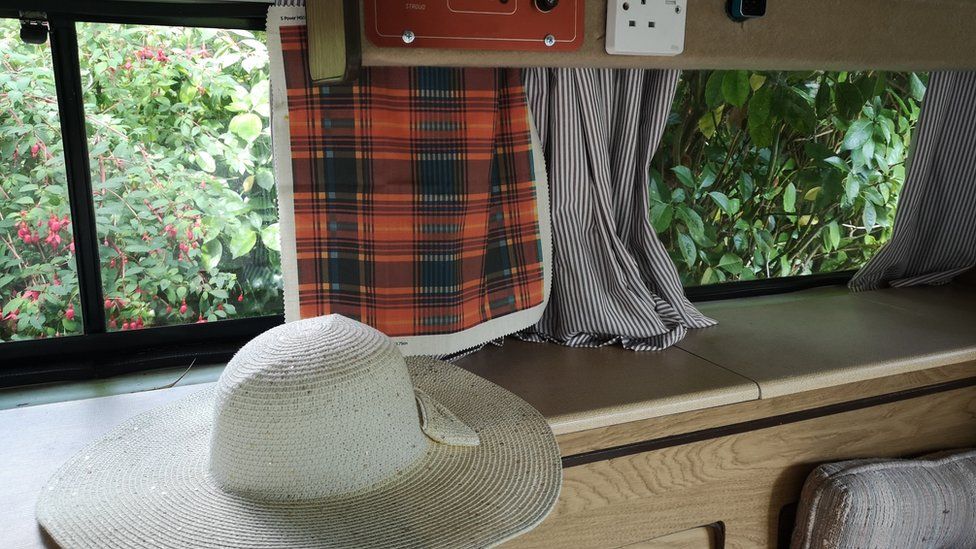Is AI a threat to the world of fabric design?

Last year my partner and I thought it would be funny to send Christmas cards designed by artificial intelligence (AI).
So we went to one of the AI-powered websites that create pictures from a text description. We asked it to draw a springer spaniel going down a hill on a sledge. In the style of Salvador Dali.
Once we got the image, and emailed it to a local printers, all we then had to do was send the cards to our bemused friends and family.
Eight months is a long time in AI, and this concept of asking AI to make you a specific design that you have in mind has spread to the world of fabrics.
One of the first firms to enter this field is UK textiles business The Millshop Online. Its AI-powered Fabric Genie tool will turn your text description into a pattern that it will then print onto as many metres of cotton, or a cotton-linen mix, as you want.
Carl Fisher, the company’s director, says: “We’ve been in the industry a while. My mum was a curtain-maker and she worked out of our garage.
“My dad was a textile retailer, and that’s how they met. We started out as wholesalers and then I went into engineering. And so now all the elements have come together.”

To create Fabric Genie, the Northamptonshire-based business joined forces with an AI consultant called Danny Richman.
“Fabric Genie is a classic example of how artificial intelligence is encroaching into so many fields,” says Mr Richman. “There’s a huge amount of code that runs the whole process. I’ve built it for Carl, but I’m not a coder.
“Instead, I used an AI to generate the code that is running this whole platform. So it’s enabling all kinds of people, not just in the field of design, to take something that is an idea, and, without any friction whatsoever, turning that idea into a reality.”
Our camper van could do with new curtains, so I decided to test out Fabric Genie by asking it to design a tartan.
I said that I wanted a grey-green and beige base, and some thin stripes in orange, electric blue and shocking pink.

A message tells me to wait between five and 15 minutes for my design to be generated. In the time it takes me to boil the kettle and make a cup of tea, a second email arrives telling me my tartan is ready.
I am presented with four different designs, and a gushing commentary that complements me on my “savvy” choices.
Unfortunately, they are absolutely not what I had in mind. They instead remind me of a tablecloth we had at home in the 1970s.
So instead I try again, and this time I take advantage of the fact that you can also upload a photo of the sort of pattern that you are after. Second time around I am happy with one of the designs, and order a cotton sample to be sent out in the post.
I wonder what my cousin’s wife might make of all this. Claire Murray is an artist and textile designer, but she creates her patterns in a much more traditional way.
“Technically an AI design might be perfect, but lacking taste and more importantly, soul,” she says.
“The best creative endeavour doesn’t come from a set of algorithms, but from research, knowledge, experience and human instinct. Yet AI could have enormous benefits to the artist or designer, by speeding up the creative process or research phase of an idea.”

Fellow textile designer Paul Simmons has mixed feelings about AI. “On one level I feel completely OK with it, and on the other I find it slightly terrifying,” says the co-founder of Edinburgh-based luxury fabric and wallpaper company Timorous Beasties.
“We’ve already had this with the digital revolution to some extent. But it’s still just a tool, that can make your job easier. There’s a whole pile of aesthetic judgements that you have to make too. I’m not sure how good computers are at doing that.
“You have shops on the High Street that can produce any cushion that you want. And what do you get? People coming in with photos of their cat, or their kids.
“To be fair, they’re very personal and good fun, but aesthetically? Are they well designed? Do they look good? Probably not.”


Mr Simmons also says that while designs at Timorous Beasties are woven through the fabric, such as “a lovely bright nylon thread that goes through wool”, the AI-made designs at Fabric Genie and rival Prinfab are simply printed on top of the material.
There is, however, a significant price difference. While Timorous Beasties’ fabric can cost £130 a metre, Fabric Genie’s is £20.
Mr Simmons adds that he “doesn’t wish to be a Luddite” in regard to AI and fabric design, which is apt.
The word “Luddite” today means someone who is opposed to new technology, and its origin was a movement of 19th Century millworkers in England who were opposed to the increased use of machinery in textile manufacturing.
Carl Fisher says that currently there is no copyright infringement regarding AI-made designs based on existing human-made ones, as long as you have requested something “in the style of”. He adds that this enables people to be “much more free about design and style”.
Meanwhile, my tartan sample has arrived, and although it does look printed, I think it would be a nice match for the VW van.
